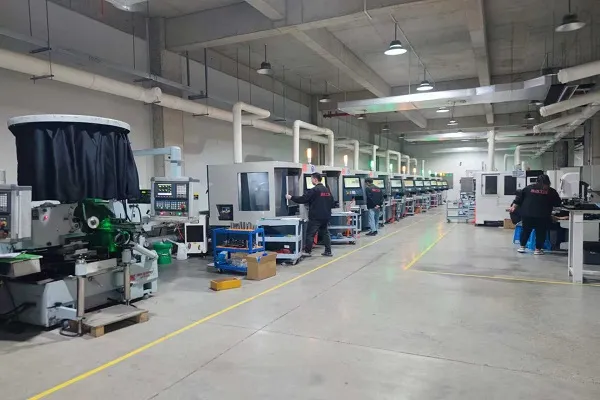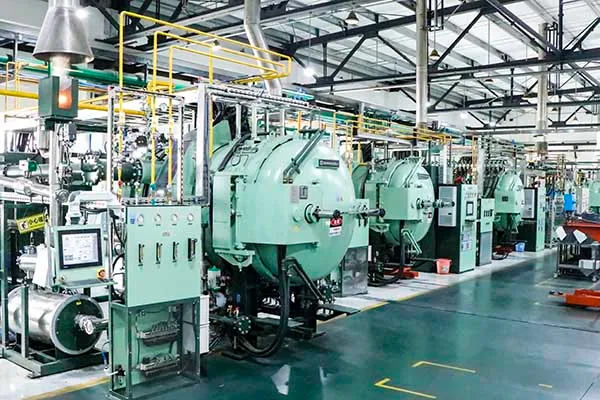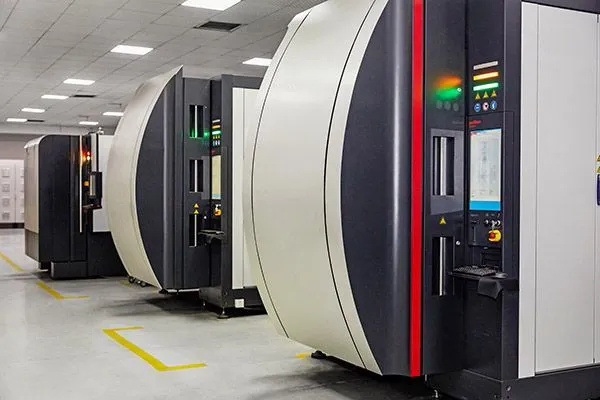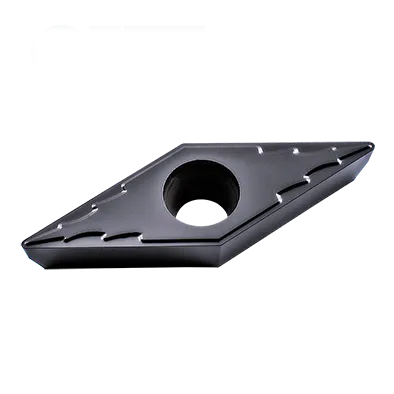

VCMT insert
VCMT insert angle:35 degrees 7° Positive Rake Insert with single-sided Chipbreaker;
Screw-On Insert, Finishing machining;
VCMT insert sizes: IE6.35mm/9.525mm;LE11mm/16.5mm;RE0.4mm/0.8mm/1.2mm;
Matching VCMT insert Tool Holder: SVJBR/L, SVABR/L, SVVBN, SVQBR/L, SVUBR/L;
Range of VCMT insert types:(ISO)VCMT1103/ VCGT1604;
VCMT Insert can deal with multiple operations by combining different chip breakers and grades;
Introduzione al prodotto
The insert is mainly used for semi-finishing or finishing applications.
The diamond shape with a 35 degree top angle has the widest accessibility and provides the best surface finish when machining out of round.
With our proprietary coating, the insert is suitable for most materials.
Caratteristiche principali
- Forma: VCMT inserts feature a 35° rhombic (diamond) shape, giving them four cutting edges for cost-effectiveness. This narrower angle enhances strength at the cutting tip.
- Angolo di inclinazione positivo: The cutting face slopes slightly forward from the cutting edge. This often produces a smoother cut with lower cutting forces, suitable for softer materials or low-power machines.
- Angolo di passaggio: In genere 7° per evitare lo sfregamento contro il pezzo.
- Chipbreakers: VCMT inserts feature various chipbreaker geometries to control chip formation and flow.
- Rivestimenti: Often coated with materials like TiN, AlTiN, etc., to improve wear resistance and tool life.
VCMT insert Specification
Understanding the Insert Code
V: Shape. Rhombic (diamond) with a 80-degree included angle.
C: Clearance Angle. 7 degrees (positive).
M: Tolerance. Typically medium tolerance, but other options might be available.
T: Chipbreaker style & Hole Configuration. This letter identifies the specific chipbreaker geometry and hole presence/absence. Chipbreaker variations are numerous and manufacturer-specific.
Cifre numeriche:
First Two Digits: Inscribed circle (IC) diameter in millimeters. To obtain the approximate inch equivalent, divide this number by 25.4.
Next Two Digits: Thickness in millimeters. Divide by 25.4 to convert to inches.
Last Two Digits: Nose radius in millimeters. To convert to inches, divide by 25.4.
VCMT insert holder(Boring bar)
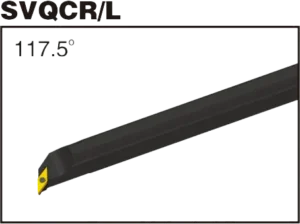

SVQBR/L
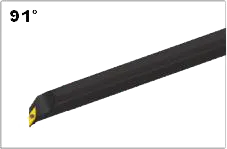
SVUBR/L

Carbide VCMT Insert Dimensions (ISO)
| Designation | Cerchio iscritto (IC) | Spessore | Raggio d'angolo |
|---|---|---|---|
| VCMT 110302 | 11mm (0.43") | 3,18 mm (0,125") | 0,2 mm (0,008") |
| VCMT 110304 | 11mm (0.43") | 3,18 mm (0,125") | 0,4 mm (0,016") |
| VCMT 160404 | 16 mm (0,63") | 4,76 mm (0,187") | 0,4 mm (0,016") |
| VCMT 160408 | 16 mm (0,63") | 4,76 mm (0,187") | 0,8 mm (0,031") |
Example: VCMT 160408 (ISO)
- Forma rombica (diamante) con angolo di inclusione di 80 gradi
- Angolo di sicurezza positivo di 7 gradi
- Tolleranza media
- Configurazione del rompitruciolo e del foro specifica del produttore
- Diametro del cerchio inscritto di 16 mm (circa 0,63″ in pollici)
- 4 mm di spessore (circa 0,157″ in pollici)
- Raggio del naso di 0,8 mm (circa 0,031″ in pollici)
La scienza degli inserti in metallo duro: Come sono fatti e perché sono così forti
Gli inserti in metallo duro sono tra gli utensili da taglio più versatili e durevoli che esistano. Ma come sono fatti? E cosa li rende così resistenti? In questo video esploreremo la scienza alla base degli inserti in metallo duro, dalle proprietà del carburo di tungsteno al processo di produzione.
La nostra capacità di produzione
Nella produzione moderna, gli inserti in metallo duro ad alte prestazioni sono strumenti indispensabili, che gettano le basi per una lavorazione efficiente e precisa dei metalli. Tuttavia, questi inserti eccezionali non nascono da soli, ma sono supportati dall'incessante sostegno di macchinari avanzati.

